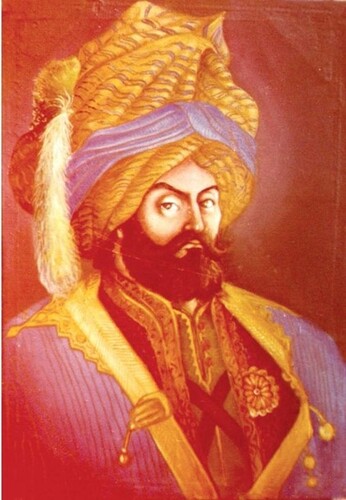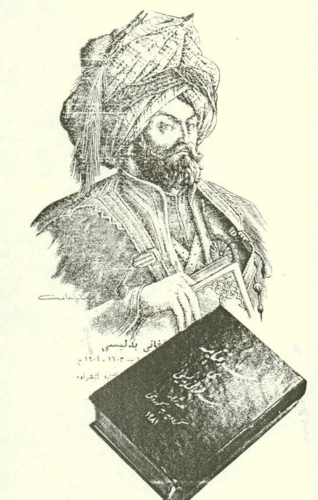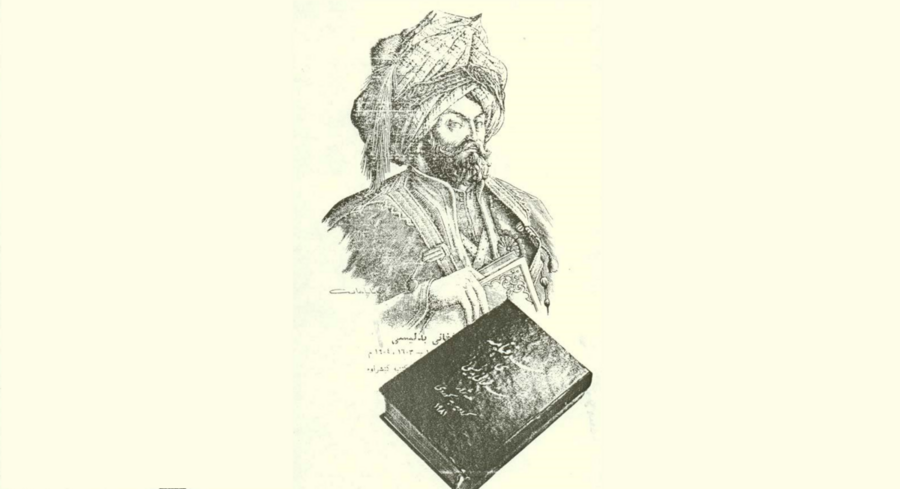In 1533, with the plan and support of some people, Shamsaddin Bag, father of Sharafkhan Badlisi, was summoned to the palace of Sultan Suleiman I of the Ottoman Empire. Shamsaddin Bag was invited to demand the power of Badlis and was told that instead of that power, he would be given the regions of Malatya and Marasht. He rejected this and was exiled to a region between Qom and Hamedan in Iran by the Ottoman Empire.
He was removed from the rule of the Emir of Badlis and expelled from his homeland and forced to move to the palace of King Tahmasb in Iran.
He was welcomed there and a month later married the daughter of one of the great men of Qzilbash, the ruler of Khorasan. After the marriage, in 1534, a child was born in the Grihrood region of Qom and they named him Sharaf. Sharaf lost his mother as a child and was raised by judges in Grihrood after the incident.
Sharaf learned to read and write from an early age, and according to the tradition of the time, he should have been raised and cared for in the king's palace with the children of the king and the elders. There he learned science and Sharia well.
"Shah Tahmasb tried to teach him the art of painting and told him that this art makes humanity beautiful," Sharafkhan said in his biography. This statement of Sharafkhan shows that he grew up in the king's palace.
When Sharafkhan's father Shamsaddin Bag got old, at his own request and that of Shah Tahmasb, Sharafkhan became his father's deputy and became governor of some areas.

In 1559, the son of the Ottoman Sultan, Sultan Bayazid, for some reason, became upset with the Ottoman state and went to Iran. Sharafkhan Badlisi was one of those at the meeting with the Ottoman prince. At the time, some of Sharafkhan's opponents told the Shah of Iran that he was more on the side of the Ottoman Empire. The Shah became upset with Sharafkhan and sent him away to Gilan. At the same time, he became responsible for suppressing the uprising of Khan Ahmad Khan Biya Pish in Gilan; Sharafkhan suppressed the uprising and became the ruler of the region. He ruled several regions of Iran for 15 years and worked at the palace of the Iranian king.
After the death of King Tahmasb and the accession of King Ismail II, there was a conflict among the elders of Qzilbash. Sharafkhan had felt threatened sometime earlier.
A month later, King Ismail ordered Sharafkhan to take part in the battle to take over the government of Nakhchivan. Sharafkhan sees this as a good opportunity to go back to his country.
In 1578, after a year and several months, he crossed the Ottoman border with four hundred companions and went to Badlis. The officials of the Ottoman state gave him a warm welcome and offered him as a reward the rule he had inherited from his ancestors.
In 1586, Sharafkhan began writing Sharafnama. After writing Sharafnama, he did not live long.
According to Zeya Sharafkhan, Sharafkhan Badlisi passed away in 1603 or 1604 and was buried in Badlis in Kurdistan. His name will be recorded on Sharafnama and in the history of the Kurdish people.

Sharafnama
Sharafnama, written by Sharafkhan Badlisi, consists of two volumes. The first volume is divided into four sections and deals with the history of the ruling families of Kurdistan in the Middle Ages.
In the second volume, he deals with the history of Iranian and Ottoman rulers up to the time of himself, Emir Sharafkhan.
At the end of the first volume, Sharafkhan wrote: "This was written at the end of the month of Dhul-Hijjah in 1005 AD by a poor writer and writer in need of God's mercy, Sharaf son of Shamsaddin Kasrayi. God saves his pen from burning and mistakes."
It consists of 247 pages in all. Volume I to page 155 and Volume II begins on this page. The first volume is written on the history of the Kurds and the second volume is written on the history of the Ottoman kings, the kings of Iran, and Turan.
The first volume was completed on August 14, 1597, but the ending of the second volume is unclear because Sharafkhan wrote the same date as the first volume at the end of the second volume.









